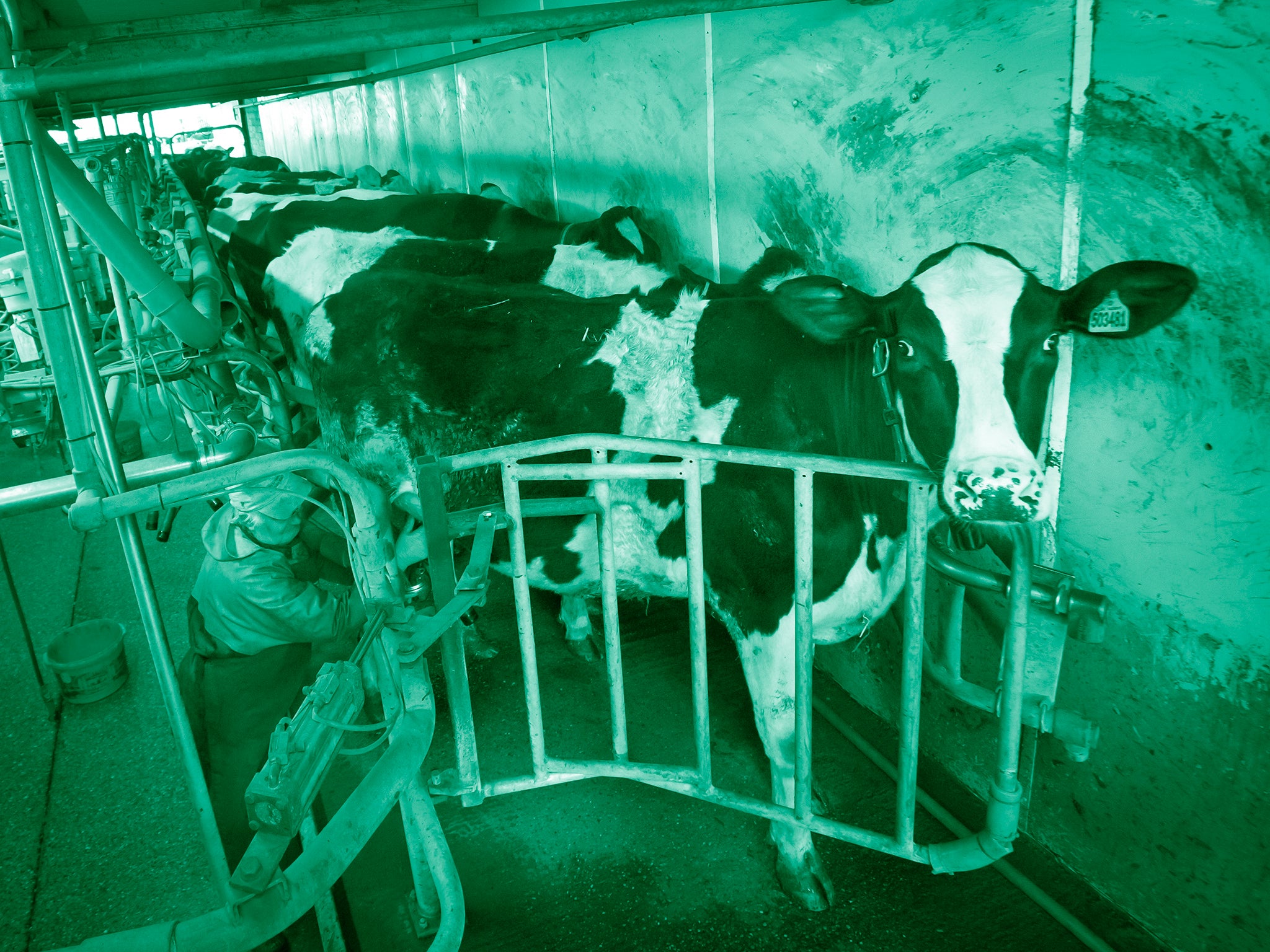Is cultivated ‘lab-grown’ meat the next eco-revolution?

Your support helps us to tell the story
This election is still a dead heat, according to most polls. In a fight with such wafer-thin margins, we need reporters on the ground talking to the people Trump and Harris are courting. Your support allows us to keep sending journalists to the story.
The Independent is trusted by 27 million Americans from across the entire political spectrum every month. Unlike many other quality news outlets, we choose not to lock you out of our reporting and analysis with paywalls. But quality journalism must still be paid for.
Help us keep bring these critical stories to light. Your support makes all the difference.
In October 2021 it was revealed the European Union is investing €2m into a scientific project to develop cultivated beef for commercial markets.
The funding was granted to two Dutch food firms – Nutreco and Mosa Meat – which are attempting to lower the costs of growing meat in vitro.
Cultured meat has been put forward as a solution to the climate impact of the meat industry. Global food production is responsible for a third of all planet-heating gases produced by humans, with meat causing twice the pollution of plant-based foods, according to a study by the University of Illinois.
What is cultivated meat?
Cultivated meat, also sometimes referred to as cell-based meat, clean meat, cultured meat and in-vitro meat, is artificially-grown genuine meat that is produced by cultivating animal cells directly.
After cells are taken from a healthy animal, which isn’t killed in the process, they are placed in a large stainless-steel tank called a cultivator where it is fed nutrients until it divides and grows.
The cells are also given growth factor components, which are signals that tell it what to do. The process takes two to three weeks depending on the type of meat being produced, and is currently restricted to a texture similar to mince.
As the Good Food Institute states: “This production method eliminates the need to raise and farm animals for food. Cultivated meat is made of the same cell types arranged in the same or similar structure as animal tissues, thus replicating the sensory and nutritional profiles of conventional meat.”
Is it better for the environment?
An analysis by research and consultancy firm CE Delft concluded that cultivated meat can offer environmental gains compared to conventional meats - beef, pork and chicken.
The researchers said: “Cultivated meat uses much less land compared to all conventional meats. It also has a much lower carbon footprint than beef and is comparable to current global average footprints for pork and chicken when produced using conventional energy.
However, the report also found that the environmental impact of cultivated meat is largely driven by energy use, primarily electricity use during production itself.
It adds: “This study shows that cultivated meat has the potential to become a sustainable source of protein compared to most conventional meat products, and could even undercut all conventional animal meats in sustainable energy scenarios.
“When using sustainable energy, cultivated meat has a lower carbon footprint than ambitious production benchmarks for all conventional meats.”
Is the energy needed to grow cultivated meat a problem?
A study by the Oxford Martin School states artificially-grown beef could generate longer-lasting and more damaging greenhouse gases than rearing cattle normally.
The new research, published in the journal Frontiers in Sustainable Food Systems, suggests over a longer time frame, production of lab-grown meat could generate greater concentrations of damaging CO2.
While methane remains in the atmosphere for around 12 years, CO2 accumulates for millennia.
The study suggests the environmental benefits of large scale production of artificial meat hinge on the means of power generation used to make the artificial product in the factories.
The scientists from the Oxford Martin School said they found cultured meat was not necessarily “climatically superior to cattle”, adding: “Its relative impact instead depends on the availability of decarbonised energy generation and the specific production systems that are realised.”
The researchers concluded only in the most optimistic scenarios was the impact of lab-grown meat less harmful than cattle-rearing.
“In the most optimistic cultured meat production footprints, emissions are competitive with cattle systems for CO2 while avoiding the other gases: this is unambiguously superior from a climate perspective,” they said.
When will cultivated meat become available?
The Singapore Food Agency approved the world’s first cultivated meat product for sale in December 2020. Shortly after, the 1880 restaurant in Singapore marked the historic first commercial sale of the approved cultivated chicken bite produced by California-based Eat Just.
In June, an Israeli company, Future Meat, announced that it was opening a facility that will produce the equivalent of 5,000 hamburgers a day and hopes to have product available in the US by 2022.
Nicholas Genovese, a stem cell biologist and a pioneer of the science, told Discover that there are challenges with scalability and meeting regulatory hurdles that must be overcome. He added: “Several companies have talked about initial limited launches in or by 2022. But it may be a few more years before there’s widespread access and distribution.”
Join our commenting forum
Join thought-provoking conversations, follow other Independent readers and see their replies
Comments